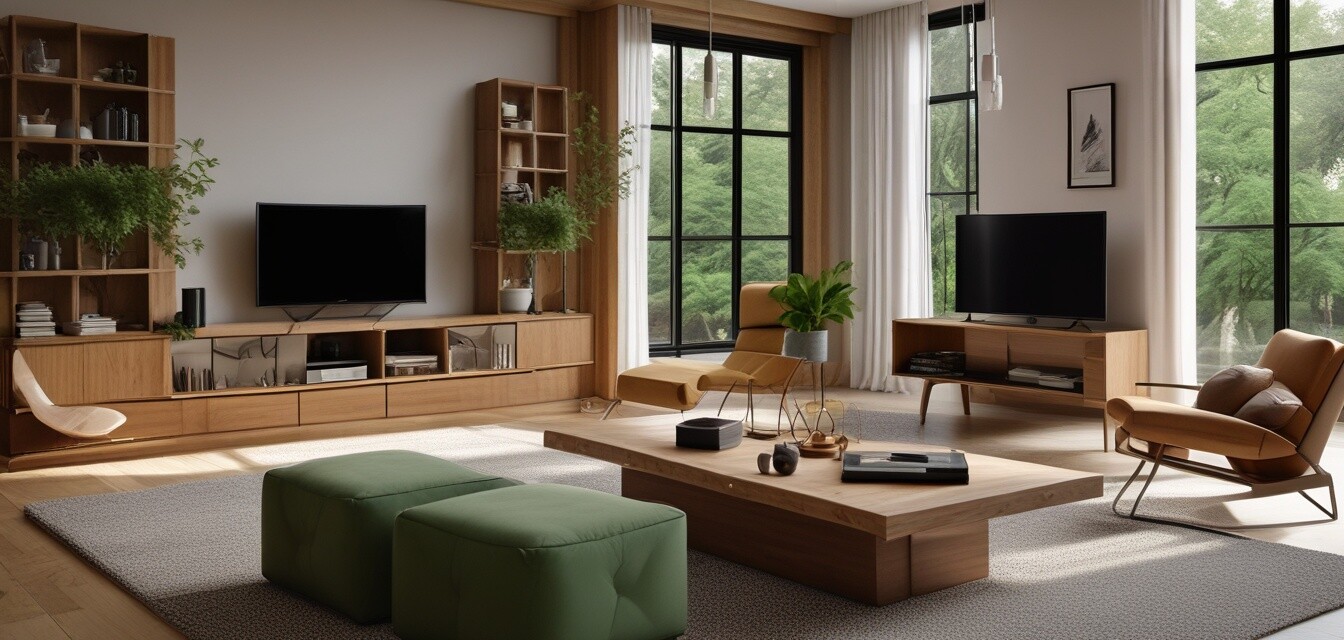
The Consumer Shift Towards Sustainable Products
Key Takeaways
- Consumers are increasingly prioritizing sustainability in furniture purchases.
- The demand for eco-friendly TV stands reflects a broader market trend.
- Key materials driving the sustainable furniture trend include reclaimed wood and metal.
- The shift offers manufacturers opportunities to innovate and create stylish, sustainable options.
As environmental concerns become more pressing, consumer preferences are evolving rapidly. In the furniture market, especially concerning TV stands, a clear shift towards sustainable products is evident. This article explores the reasons behind this transformation, the materials influencing this trend, and what it means for consumers and manufacturers alike.
The importance of sustainability in consumer choices
In today’s world, consumers are becoming more aware of their purchasing decisions' environmental impact. Factors driving this change include:
- Increased awareness: Social media and information campaigns have raised awareness about environmental issues.
- Desire for transparency: People want to know where their products come from and how they are made.
- Health and safety: Eco-friendly products are often perceived as healthier options for homes.
Trends in sustainable TV stands
The shift towards sustainable furniture is particularly noticeable in the TV stand segment. Consumers are leaning toward designs that not only incorporate eco-friendly materials but also support a sustainable lifestyle. Here are notable trends:
| Trend | Description |
|---|---|
| Reclaimed Materials | TV stands made from reclaimed wood or metal are becoming popular due to their unique aesthetics and minimal environmental impact. |
| Modular Designs | Consumers prefer modular TV stands that allow for customization and adaptability to their space. |
| Minimalist Aesthetics | Less is more, with many opting for sleek, functional designs that use sustainable materials. |
| Multi-functional Furniture | TV stands that serve dual purposes, like storage or decorative space, are increasing in demand. |
Materials that drive the change
The type of materials used in the production of furniture significantly influences sustainability. Key materials include:
- Reclaimed wood: These materials are sourced from old buildings or wood structures, reducing waste and preserving forests.
- Bamboo: Fast-growing and renewable, bamboo is a popular choice for eco-friendly furniture.
- Metal and glass: Upcycled metal and glass items fit seamlessly into the sustainable furniture landscape.
How manufacturers are responding
As demand for sustainable TV stands grows, manufacturers are innovating to meet consumer expectations. Many companies are:
- Investing in sustainable sourcing practices.
- Implementing eco-friendly production methods to minimize waste.
- Offering transparency regarding materials and processes used.
The impact on the market
The shift towards sustainable products is reshaping the furniture market, leading to:
- Increased competition among manufacturers to produce eco-friendly options.
- A rise in partnerships with sustainable suppliers and local artisans.
- Greater consumer loyalty towards brands committed to sustainability.
Why choose sustainable TV stands?
Here's why opting for sustainable options matters:
| Sustainable TV Stands | Traditional TV Stands |
|---|---|
| Made from eco-friendly materials | Often made from non-renewable resources |
| Supports environmental conservation | Can contribute to deforestation and pollution |
| Often unique designs | Mass-produced and less unique |
| Promotes health-conscious living | May contain harmful chemicals and toxins |
Conclusion
The consumer shift towards sustainable products within the furniture market, particularly TV stands, represents a significant change in purchasing behavior. As more individuals prioritize eco-friendliness, manufacturers are responding with innovative and responsible designs. Consumers can feel good about their choices while enjoying stylish and functional furniture that fits their needs.
Tips for choosing sustainable TV stands
- Look for certifications that indicate sustainable sourcing.
- Research the brand’s commitment to environmental practices.
- Consider the longevity and durability of materials.
- Evaluate the versatility of design and function.
Pros
- Environmentally friendly and sustainable.
- Unique designs and aesthetics.
- Promotes healthier living spaces.
- Supports local artisans and businesses.
Cons
- Can be more expensive than traditional options.
- Availability may be limited.
- Some eco-friendly materials may require more maintenance.
For more information about choosing the right sustainable furniture for your space, check out our buying guides. Stay updated with the latest trends in eco-friendly living by visiting our news and trends section!